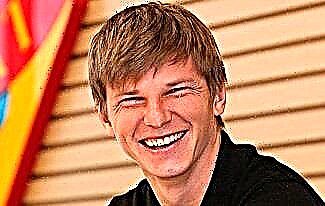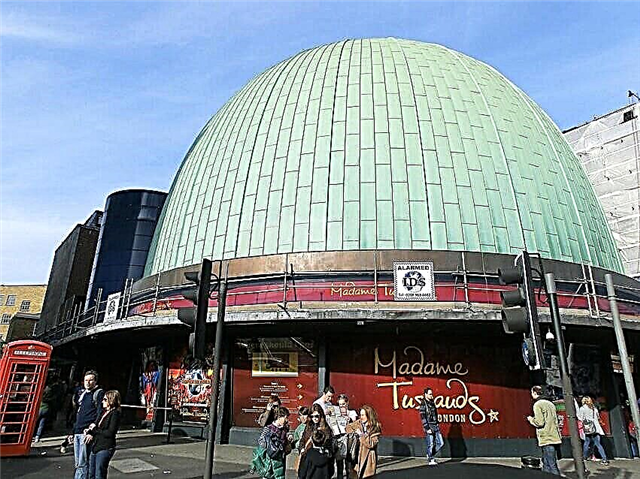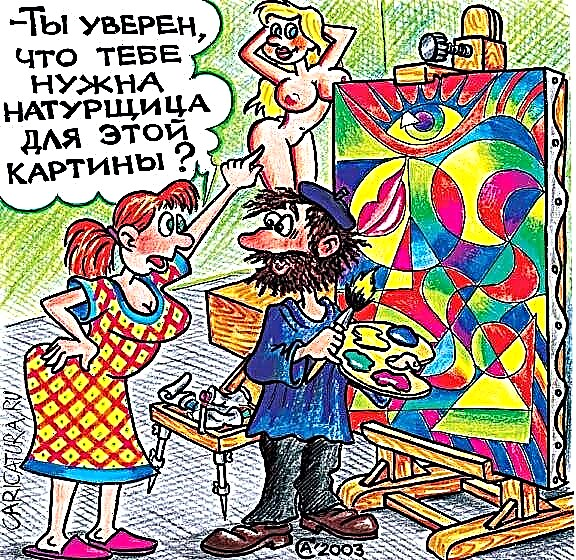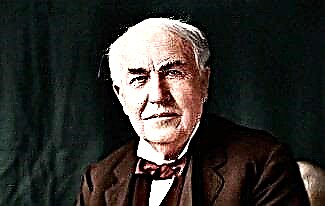The Kolomna Kremlin is located in the Moscow region and is an architectural ensemble of the 16th century. It consists of defensive walls with watchtowers and several historic buildings that are well preserved to this day.
History of the Kolomna Kremlin
The Moscow Grand Duchy sought to strengthen its southern borders from the Crimean Tatars, erecting defensive fortresses in Tula, Ryazan and Saraysk. The turn came to Kolomna, which was defeated by the Crimean Khan and demanded protection. The main part of the fortifications was burned by Mehmed I Giray. The wooden fortress, on the basis of which the stone Kremlin was built, has left almost no information about itself.
Construction began in 1525 and lasted six years by order of Vasily III. Originally there were 16 towers included in a continuous one, up to 21 meters high, enclosing a wall. The territory of the Kolomna Kremlin occupied 24 hectares, which was only slightly less than the Moscow Kremlin (27.5 hectares). The fortress is located on the high bank of the Moskva River near the mouth of the Kolomenka River. Good defense and good location made the Kremlin impregnable. This became clear at the end of 1606 during the peasant uprising of Ivan Bolotnikov, who unsuccessfully tried to storm the citadel.
In the 17th century, when the southern borders of tsarist Russia moved further and further south, the defense of the Kolomna Kremlin lost its original significance. In Kolomna, trade and crafts developed, while the city fortification was almost not supported and was noticeably destroyed. Several civil buildings were built inside the Kremlin wall, as well as around the citadel, during the construction of which parts of the Kremlin wall were sometimes removed to obtain bricks for construction. Only in 1826 was it forbidden to disassemble the state heritage into parts by decree of Nicholas I. Unfortunately, then most of the complex had already been destroyed.
Kremlin architecture in Kolomna
It is believed that Aleviz Fryazin acted as the chief architect of the Kremlin in Kolomna, based on the Moscow example. The architectural structure of a master from Italy really has features of the Italian architecture of the Middle Ages, the forms of defensive structures noticeably repeat the fortresses of Milan or Turin.
The Kremlin wall, which reached almost two kilometers in its original state, is up to 21 meters high and up to 4.5 meters thick. It is interesting that the walls were created not only for protection from assault, but also for the purpose of cannon defense. The height of the preserved watchtowers ranges from 30 to 35 meters. Of the sixteen towers, only seven have survived to this day. Like Moscow, each tower has a historical name. There are two towers along the preserved western part:
- Faceted;
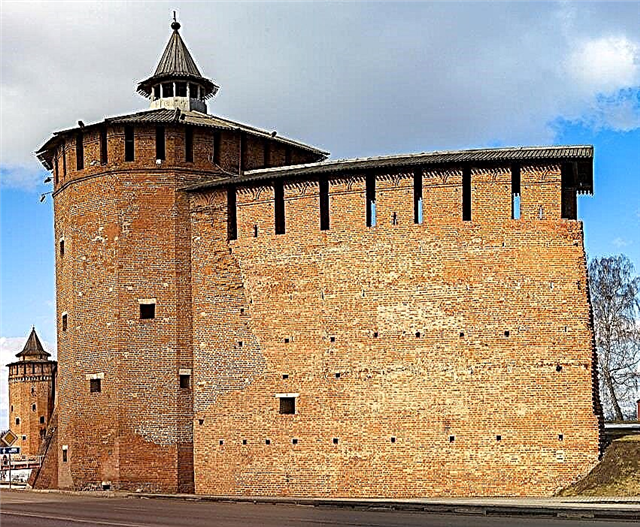
- Marina.
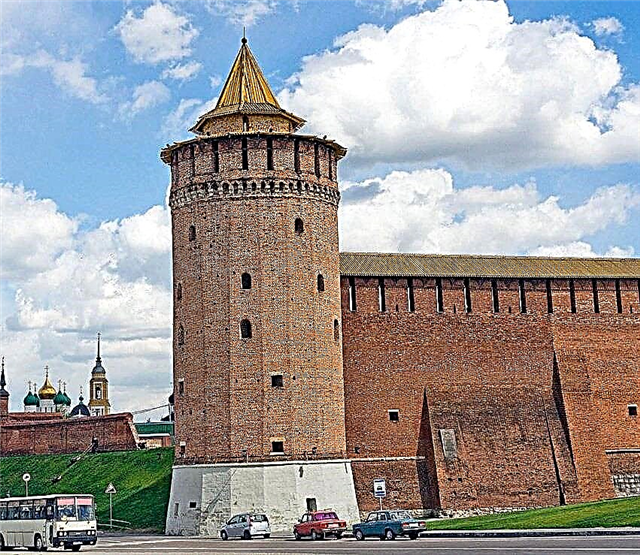
The other five towers are located along the former southern part of the Kremlin wall:
The Pyatnitsky Gate is the main entrance to the historical complex. The tower got its name in honor of the church of Paraskeva Pyatnitsa, which stood near it, destroyed in the 18th century.
Cathedrals and churches of the Kolomna Kremlin
The architectural ensemble of the Novogolutvinsky monastery of the 17th century includes the secular buildings of the residence of the former bishop and the neoclassical bell tower of 1825. Now it is a nunnery with over 80 nuns.
The Cathedral of the Assumption in 1379 is somewhat reminiscent of the cathedral of the same name in Moscow. Its construction is associated with the decree of Prince Dmitry Donskoy - after the triumph over the Golden Horde, he gave the order to build it.

Separately stands the bell tower of the Assumption Cathedral, which plays an important role in the architectural ensemble of the Kremlin. Initially, the bell tower was built of stone, but in the 17th century it was significantly dilapidated and was rebuilt again, this time from brick. In 1929, after the Bolshevik campaign, the Cathedral bell tower was destroyed, everything of value was taken out and the bells were thrown down. Full restoration took place in 1990.
The Church of the Tikhvin Icon of the Mother of God was erected in 1776. In the 1920s, all the interior decoration was destroyed, and the church itself was closed. Restoration work took place in 1990, when the dome was re-painted and five chapters were restored.
We recommend looking at the Rostov Kremlin.
The oldest church in the Kremlin is the Church of St. Nicholas Gostiny, built in 1501, which preserved the Gospel of 1509.
Cathedral Square
Like the Moscow Kremlin, Kolomna has its own Cathedral Square, the architectural dominant of which is the Assumption Cathedral. The first mention of the square dates back to the XIV century, but it acquired its modern appearance only 4 centuries later, when the city was reconstructed according to a "regular plan". In the north of the square there is a monument to Cyril and Methodius, installed in 2007 - two bronze figures against the background of a cross.
Museums
More than 15 museums and exhibition halls operate on the territory of the Kolomna Kremlin. Here are the most curious and their descriptions:
Organizational matters
How to get to the Kolomna Kremlin? You can use personal or public transport, going to st. Lazhechnikova, 5. The city is located 120 kilometers from Moscow, so you can choose the following route: take the metro to Kotelniki station and take bus number 460. He will take you to Kolomna, where you can ask the driver to stop at the "Square of two revolutions". The whole journey will take about two hours from the capital.
You can also take the train. Go to Kazansky railway station, from which trains "Moscow-Golutvin" run regularly. Get off at the last stop and change to shuttle bus # 20 or # 88, which will take you to the sights. It should be noted that the second option will take you more time (2.5-3 hours).
The territory of the Kremlin is open to everyone around the clock. Opening hours of museum exhibitions: 10: 00-10: 30, and 16: 30-18: 00 from Wednesday to Sunday. Some museums are only accessible by appointment.
Recently, you can get acquainted with the Kolomna Kremlin on scooters. Rent will cost 200 rubles per hour for adults, and 150 rubles for children. For a deposit for a vehicle, you will have to leave a sum of money or a passport.
To make the tour of the main attraction of Kolomna as informative as possible, it is best to hire a guide. The price for an individual excursion is 1500 rubles, with a group of 11 people you can save money - you will have to pay only 2500 rubles for all. A tour of the Kolomna Kremlin lasts an hour and a half, photographs are allowed.




